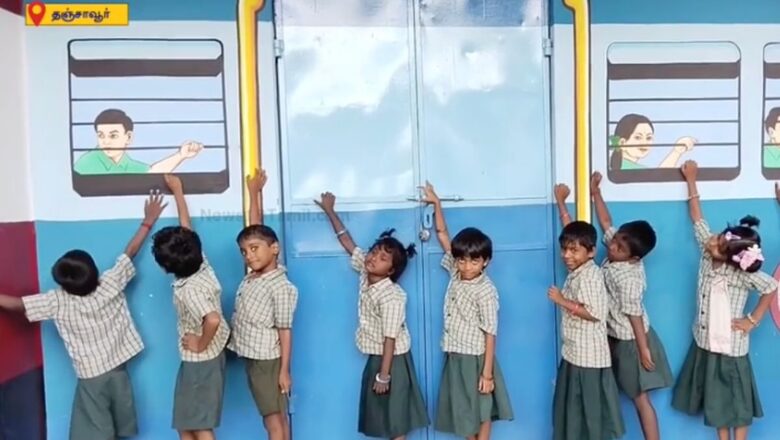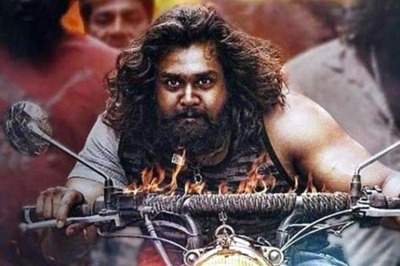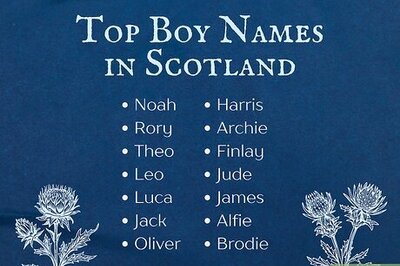
views
The three of them looked upwards, waiting fearfully for the inevitable explosion to happen in the next few seconds. Pinky somehow kept a straight face while little Mini giggled. And then they heard it. DK Malhotra winced as the Pomeranian started barking upstairs. Indu Malhotra screamed and chased it down the stairs of their duplex apartment in Delhi demanding to know of her husband and two daughters which of them had brought the puppy into their home without her permission.
Children deserve a happy childhood. But are all of them as fortunate as Mini and Pinky in Masoom (1983) were? Let us take a walk through some of the dark lanes portrayed in Bollywood where children were waylaid of their innocence.
In Boot Polish (1954) destitute Bholu and his sister Belu are forced to beg in the streets and on the Bombay local trains by their wicked aunt Kamla. Boot Polish was arguably one of the earliest depictions of the begging mafia that is rampant in various cities. Bholu and Belu do not weep at their poverty because this was the economic normal that they were born into. Bholu enthusiastically plans his entrepreneurial journey, figuring out that polishing a pair of shoes realized an anna (6 ¼ paise) whereas begging fetched only one paisa from each donor. But then he had to raise a capital of Rs.1.50 towards the boot polishing cream and a brush which he does by going on an overdrive on begging one last time and borrowing the last two annas required to make up Rs.1.50 by borrowing from a bootlegger. For Bholu and Belu, hunger and domestic abuse was a kind economics teacher.
In rural India, cult and custom serves as a good excuse to push young girls into prostitution. Giddh (1984) was about a custom in a south Indian village of handing over neo-pubescent girls to the ‘service’ of a god called Yellamma and to be made ‘devadasis’ (servants of God); else the parents of the girls would incur the wrath of Goddess Yellama. In reality these girls were forced to become keeps to the feudal honchos. The old rich Desai can’t wait to deflower Chelvi within a day of her reaching adulthood and young Lakshmi had been ‘signed up’ in advance by the wealthy Patil even before she reached puberty. Partly the fear of Yellamma’s curse and partly their extreme poverty left the villagers with little choice. An ‘escape route’ for the villagers (if it could be called that), was one offered by the smarty-pants pimp Virupaksha from Bombay. Under the pretext of rescuing the girls from this devadasi custom he would source girl children from the village and sell them to brothels in the city. Lakshmi manages to slip away from Patil’s grasp but…She meets Virupaksha on her way to Bombay. The red colored taillight of the Bombay-bound bus tells us about the fate that awaited Lakshmi.
Salaam Bombay! (1988) may be said to be the story about what happened to the likes of Lakshmi after they reached Bombay. Salaam Bombay traces the journey of a virgin, 16-year-old called Solasaal, brought into a brothel in the infamous red light of Falkland Road and detained there till her sale at a premium to her first customer. Salaam Bombay! depicted Bombay’s dark underbelly of slums with child abuse, child labor and their exploitation, with minors turning into felons in no time. In Boot Polish the police had remanded Bholu to an orphanage. But that was in 1954.
The world changed quickly. By 1988, far from facilitating the delinquent back to mainstream, the juvenile home to which 13-year-old Chaipau in Salaam Bombay had been admitted only helped him (and boys like him) ‘graduate’ into criminality. He murders the drug dealer Baba. Fifteen-year-old Abhay in Chandni Bar (2001) was another example. Abhay is from a low-income family whose mother works in a dance bar to make ends meet. Abhay falls into bad company, gets arrested for extortion, and sent to a remand home. But there he gets sodomised by two other inmates. On his release from the home, he seeks revenge and coolly shoots to death those two boys. Corruption has eaten into the foundations of these institutions that are supposed to coach and mentor errant youngsters. Organised corruption is the new organized crime. In Manorama Six Feet Under (2007), Irrigation Minister P.P. Rathore had an appetite for sex … but with a difference. He was a perverted serial child molester.
It is inaccurate to assume that only the economically weaker and the rural children are victimised sexually. Children in urban and affluent families may be equally susceptible. There are those ever-smiling, overtly friendly uncles who would stop at nothing to serve their perverse pleasures. Amidst the happy confusion and melee in a typical Punjabi Monsoon Wedding (2001), it is revealed that Tej Puri used to molest a family member, Ria, when she was a pre-teen. Just the way in Highway (2014), Veera was abused by an uncle of the family when she was a child, leaving her with lifelong trauma.
Childhood is a basic right. The “Sa Re ke Sa Re” moments of laughter and music is the least every child deserves.
Balaji Vittal is a National Award winning and MAMI Award winning author of Bollywood books, a columnist, a Bollywood commentator and a public speaker. He can be reached on Twitter at @vittalbalaji and his website is www.balajivittal.com.




















Comments
0 comment